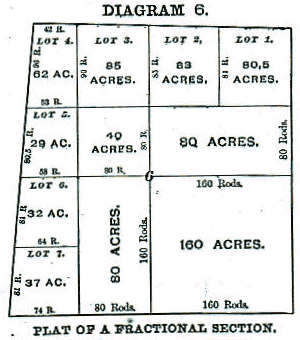Diagram 6 illustrates how the surplus or deficiency of land inside of these Sections is distributed and which "forties" or "eighties" it affects. From this arrangement it will be seen that in any Section that touches the North or West Township Lines, the Southeast Quarter may be full - 160 acres - while another quarter of the same Section may be much larger or smaller. Frequently these fractional "forties" or "eighties" are lotted as shown in Diagram 6. They are always described as fractional tracts of land, as the "fractional S.W. 1/4 of Section 6," etc. Of course those portions of these Sections which are not affected by these variations are described in the usual manner - as Southeast 1/4 of Section 6. As a rule Townships are narrower at the North than at the South side. The Meridians of Longitude (which run North and South) converge as they run North and South from the Equator. They begin at the Equator with a definite width between them and gradually converge until they all meet at the poles.Now, as the Range lines are run North and South, it will at once be seen that the convergence of Meridians will cause every Congressional Township (North of the Equator) to be narrower at its North than at its South side, as stated. See Diagram 4.
